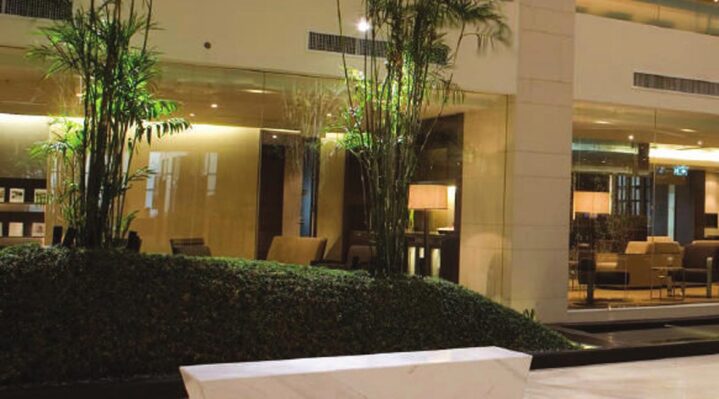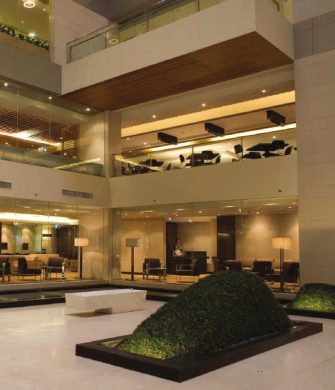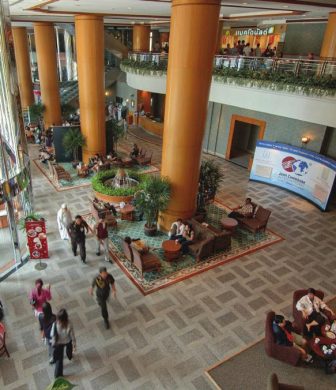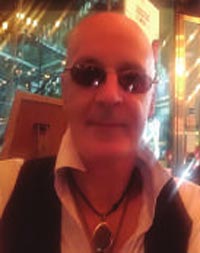
A Healthy Business
The instigation of medical tourism in Thailand can largely be attributed to one hospital group – Bumrungrad International Hospital, known by its patrons from around the world as, simply, Bumrungrad.
Bumrungrad began its rise in 1980, when it opened as a small to medium sized 200 bed hospital in a fairly quiet part of the city, sandwiched between New Petchaburi Road and the beginning of Sukhumvit Road, with the Saen Saeb canal (khlong) running nearby.
It is still there to this day, but has expanded considerably from those early days, and is now SE Asia’s largest private hospital, with 580 licensed beds and capacity for over 5,500 outpatients per day. Bumrungrad was the first hospital in Asia to receive the US standard accreditation from the Joint Commission International (JCI).
It has also become a regional centre for specialty medicine and is now one of the world’s top destinations for medical tourism. In the not too distant past well-off people from the poorer countries of the world would have travelled to Western countries for their urgently required medical care, but that has all changed, and often the reverse is now true.
So, how did this change come about? As far as Thailand is concerned, the man with the answers is Dr Erik Fleischmann. Dr Erik (first names are generally used in Thailand) gained a medical degree in California as a physician in 1988, later training in general surgery, as well as completing residency training in oncology in Southern California and an Oncology Fellowship in Rotterdam, Netherlands. He then travelled widely, working in various medical facilities around the world, before settling in Thailand, a country he had returned to many times during his global journeying.
Dr Erik has now been Director of International Medicine at Bumrungrad for the last three years, but he has a more than 15 year association with the hospital, and both his children were born there.
Said Dr Erik, “During the economic crisis of 1997, businesses, including private hospitals, were suffering greatly. The management of Bumrungrad decided to do something about this, and reached out to the governments of their Middle Eastern patients.”
This proved to be a good strategy. Within a few years Bumrungrad was booming, and it was not long before other private hospital groups in Thailand followed the same model.
Bumrungrad International Hospital now offers 38 specialty centres and clinics, and more than 1,200 doctors represent virtually all types and sub-specialties of medicine, such as dental, general and specialty medicine, advanced diagnostics and therapeutics, surgical services, intensive care, and rehabilitation are all available.
Annually the hospital treats over 1.1 million patients annually, from 190 different countries, for a whole range of medical services ranging from comprehensive checkups to intensive cardiac surgery.
Dr Erik appeared to be proud to relate that Bumrungrad is one of the finest for cardiac care anywhere in the world. The doctors, surgeons, and nursing staff are all internationally trained to the highest standards, and the technology and equipment the hospital boasts compares well with any western medical facility. In fact, Bumrungrad has one of only three Cardiac Dysthymia Ablation units in the world (the other two are in the US and France), and are the only hospital to use it for treating patients clinically, rather than just as a research tool. At Bumrungrad, use of this machine negates the necessity of surgery for patients suffering from atrial fibrillation, for example.
Bumrungrad is also lucky to have the services of veteran cardiologist Dr Koonlawee, one of the world’s top specialists in cardiac arrhythmia, who still commutes (now in his sixties) to Thailand every two weeks from his home in Los Angeles, where he is the top specialist in his field at UCLA.
He is the man who wrote the book on cardiac arrhythmia, Dr Erik told us. In many countries around the world foreign doctors are a mainstay of the health services of those countries. The NHS of the UK, for example, would not be able to survive without its foreign doctors and nursing staff.

But this is not the case in Thailand. In Thailand foreign doctors are not allowed to practice, and when Bumrungrad set out to become a world class facility that wanted to attract medical tourists from around the world, they had to do something to bring back their doctors and surgeons who had trained abroad, and were working in the UK, US, or Australia, for example.
The Thai government made it attractive for these highly trained physicians to return home to their homeland to practice. These doctors, upon their return, chose to transfer the knowledge they had acquired abroad by donating part of their time to the educational and public sector, thus transferring the knowledge back into Thailand, that they had been at pains to acquire in some of the best medical schools and hospitals in the west. This trend continues to this day.
International patients in 2018 continue to flock to Bumrungrad for oncological treatments, cardiology (the world’s smallest pacemaker is available), orthopaedics, kidney disease, and cosmetic surgery, to name but a few. After a consultation and thorough examination by a doctor, the required medical procedures are immediately available – no waiting time. When treatment is over Bumrungrad has a care system that works closely with the patient to return them home to their own country in comfort and safety.

“These doctors, upon their return, chose to transfer the knowledge they had acquired abroad by donating part of their time to the educational and public sector, thus transferring the knowledge back into Thailand”
If it is felt that a nurse or doctor is needed to travel with a patient, then that service is available. Currently, the largest number of foreign patients who are treated at Bumrungrad come from Myanmar, followed by the UAE, but last year there were 20,000 patients from the USA, and this number is continuing to rise.
The welcoming persona of Thai people, the service oriented ethic, and the reverse brain drain of Thai doctors who have received the best training outside their own country set the course for what Thailand has become today. One of the world’s top medical tourism destinations.
For further information on what Bumrungrad can offer you, please check www.bumrungrad.com

Robin Westley Martin has been working as a journalist in Thailand and Southeast Asia for nearly 30 years. He first worked as News Editor for Business in Thailand magazine, before moving on to edit and write for the Thai Airways domestic in-flight magazine, and also Hotel & Travel. He continues to work in Thailand and Southeast Asia as a freelance writer for several magazines, covering a wide range of genres.
Email: [email protected]
Facebook: Robin Westley Martin
Line: robinsiam555



